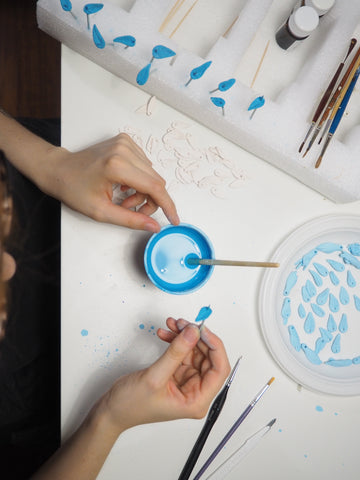/por-cel-là-na/
From "porcus" or "porcellus", based on an analogy that is unclear to us.
Name given in ancient times to several species of molluscs of the genus ciprea, due to their characteristic shiny shell, used for ornamental work.
It has ancient origins, the most characteristic one that particularly interests us, it fully developed under the Ming dynasty, in China, and is often identified as "white and blue".
It has ancient origins, the most characteristic one that particularly interests us, it fully developed under the Ming dynasty, in China, and is often identified as "white and blue".

The term porcelain refers to a particular type of ceramic, very valuable, which is fired at much higher temperatures than other pottery.
Its mixture is made up of three elements, each in a different percentage:
Ceramic, compared to porcelain, is considered less precious, due to the type of composition: a mix of minerals, clays, sands and sometimes even aluminium. Another big difference is found in the transparency of the material itself, which is more transparent in porcelain when brought close to a light source.
Its mixture is made up of three elements, each in a different percentage:
- Quartz (mineral)
- Feldspar (mineral)
- Kaolin (detrital rock)
Ceramic, compared to porcelain, is considered less precious, due to the type of composition: a mix of minerals, clays, sands and sometimes even aluminium. Another big difference is found in the transparency of the material itself, which is more transparent in porcelain when brought close to a light source.

Furthermore, its open porosity is zero: this means that the material, once cooked, will become waterproof even without the use of the glass (or glass) which is used to create an additional protective layer above the object.

Originally, the blue pigment that was used for porcelain paints was cobalt oxide, and lead was one of the main ingredients in the color. Over time this metal was replaced by other materials, but it is still possible to find it on the market in some colours, referred to as lead.

We at Flonia have chosen to use lead-free colors to guarantee not only people's health, but also a long life for our jewels, as in this way the painting is protected by the crystalline, and the color will be preserved on the porcelain forever.

